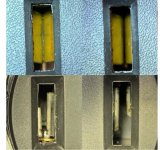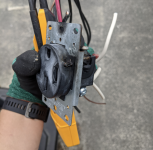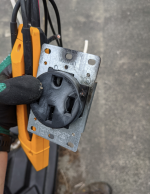LarryFine
Master Electrician Electric Contractor Richmond VA
- Location
- Henrico County, VA
- Occupation
- Electrical Contractor
And does the heating stem from the wire-to-terminal interface from or the contact-to-blade interface?The issue isn't aluminum vs copper. It is ampacity and termination temperature. It is also whether or not the testing is adequate to test for continuous use. Don and Infinity are right in questioning if the test is really providing a real world use case for the application of EV charging.
My first instinct says it's the latter; inadequate contact area and pressure for the continuous current.
What is physically different about the receptacles that don't overheat? Or do we need a new configuration?





